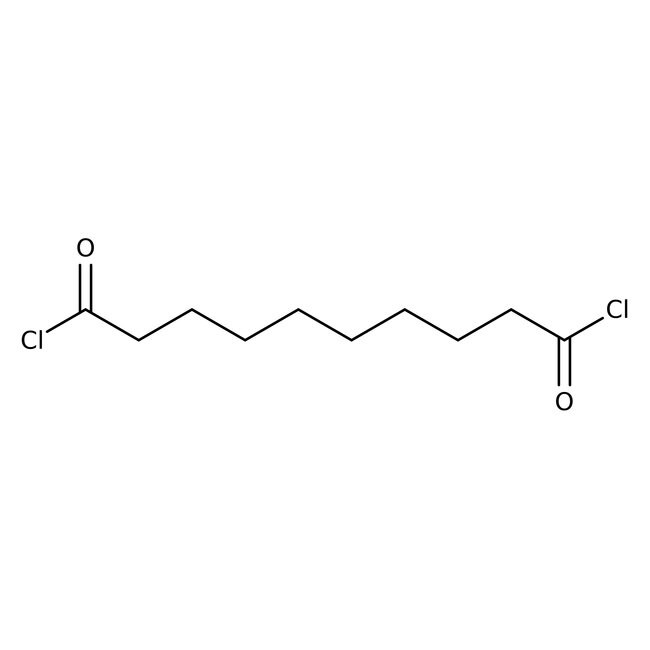Search Thermo Fisher Scientific
Sebacoyl chloride, 95%, Thermo Scientific Chemicals



Sebacoyl chloride, 95%, Thermo Scientific Chemicals
Chemical Identifiers
Specifications
Description
This Thermo Scientific Chemicals brand product was originally part of the Alfa Aesar product portfolio. Some documentation and label information may refer to the legacy brand. The original Alfa Aesar product / item code or SKU reference has not changed as a part of the brand transition to Thermo Scientific Chemicals.
Sebacoyl chloride is used in the synthesis of nylon-6,10 polymer by reacting with hexamethylenediamine. It is also used to prepare decanedioic acid bis-(3-dimethylamino-propyl) ester in the presence of triethylamine as catalyst. It is used as an intermediate in chemical synthesis. It is involved in the production of polyamide microcapsules by polycondensation of p-phenylenediamine with sebacoyl chloride using diethylenetriamine (DETA) cross-linker and oleic acid as a plasticizer.
Solubility
Miscible with hydrocarbons and ethers.
Notes
Store in a cool place. Moisture sensitive. Keep the container tightly closed in a dry and well-ventilated place. Incompatible with water, acids, bases, amines, alcohols and oxidizing agents.
Figures
Documents & Downloads
Certificates
Frequently asked questions (FAQs)
Citations & References
Safety and Handling
Classification of the substance or mixture
CLP classification - Regulation(EC) No 1272/2008
Label Elements
Signal Word
Danger
Hazard Statements
H302 - Harmful if swallowed
H310 - Fatal in contact with skin
H314 - Causes severe skin burns and eye damage
EU Specific Hazard Statements
EUH029 - Contact with water liberates toxic gas
Precautionary Statements
P280 - Wear protective gloves/protective clothing/eye protection/face protection
P301 + P330 + P331 - IF SWALLOWED: Rinse mouth. Do NOT induce vomiting
P303 + P361 + P353 - IF ON SKIN (or hair): Take off immediately all contaminated clothing. Rinse skin with water or shower
P305 + P351 + P338 - IF IN EYES: Rinse cautiously with water for several minutes. Remove contact lenses, if present and easy to do. Continue rinsing
P310 - Immediately call a POISON CENTER or doctor/physician